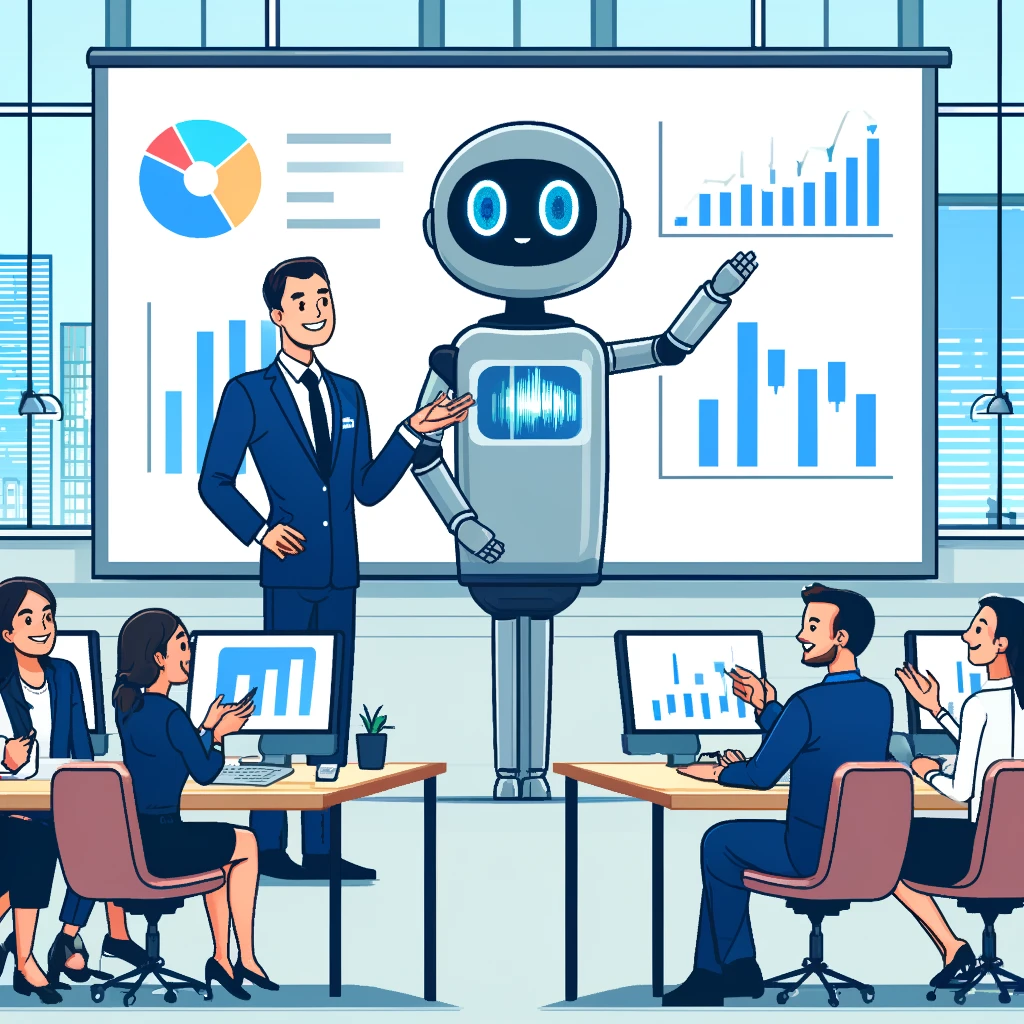- Introduction
- In the dynamic realm of modern business, the rise of artificial intelligence (AI) heralds an era of unprecedented transformation. "Applied Artificial Intelligence: A Handbook for Business Leaders" by Mariya Yao, Adelyn Zhou, and Marlene Jia serves as a beacon, illuminating the path for executives eager to harness the power of AI. This comprehensive guide bridges the gap between complex technical concepts and actionable business strategies, offering a roadmap for leaders to navigate the intricacies of AI implementation. Join us as we delve into the core insights and practical wisdom encapsulated in this seminal work.
- The Visionary Prelude: Introduction to AI in Business
- The authors commence with a compelling introduction, setting the stage for a journey through the multifaceted world of AI. They emphasize that this book is designed for business leaders, not just tech enthusiasts. The primary goal is to equip executives with the knowledge and tools needed to lead successful AI initiatives. From prioritizing opportunities to building effective teams, the book is structured to offer both strategic guidance and practical advice.
- The introduction delineates the structure of the book, divided into three main sections. The first part lays the groundwork by introducing fundamental AI concepts, the second part delves into developing a robust AI strategy, and the third part explores specific applications of AI across various business functions. This structured approach ensures that readers can navigate from foundational knowledge to practical implementation seamlessly.
- Chapter 1: Artificial Intelligence for Business
- In the opening chapter, Yao, Zhou, and Jia demystify AI and its subsets, such as machine learning and deep learning. They define AI as the broad concept of machines simulating human intelligence, with machine learning focusing on training these machines to learn from data. Deep learning, a subset of machine learning, employs neural networks to recognize patterns in data, proving highly effective in complex tasks like image recognition and natural language processing.
- The authors categorize AI into three types: Narrow AI, General AI, and Superintelligence. Narrow AI, the most prevalent today, specializes in specific tasks such as playing chess or classifying images. General AI, with human-like cognitive abilities, remains a theoretical concept, while Superintelligence, surpassing human intelligence, lies in the realm of hypothesis.
- The chapter underscores the transformative potential of AI in business, highlighting benefits such as automation, enhanced decision-making, and improved customer experiences. However, it also addresses challenges like data quality, talent shortages, and cultural resistance, providing a balanced perspective on AI adoption.
- Chapter 2: AI in the Enterprise
- Chapter 2 delves deeper into the practical applications of AI across various business functions. In marketing and sales, AI analyzes customer data to segment audiences, personalize campaigns, and identify high-value leads. Predictive analytics further enhances decision-making, optimizing pricing and marketing budgets.
- Customer service reaps significant benefits from AI through chatbots and virtual assistants. Natural language processing (NLP) enables these systems to handle routine inquiries, allowing human agents to focus on complex cases. The example of Amtrak's chatbot, Julie, showcases how AI can enhance customer interactions and drive business outcomes.
- In human resources, AI automates resume screening, analyzes employee performance data, and identifies potential issues early. Companies like Unilever leverage AI-driven hiring platforms to streamline recruitment processes, evaluating candidates through advanced algorithms that assess facial expressions and tone of voice.
- Supply chain and logistics benefit from machine learning models that optimize inventory levels, forecast demand, and manage transportation. Computer vision technologies ensure product quality by identifying defects, reducing waste, and improving efficiency.
- Product development accelerates through AI-driven analysis of market trends and consumer feedback. Procter & Gamble exemplifies this by using AI to test product concepts before launch, cutting down development time and costs.
- Finance, too, sees transformative applications of AI, from fraud detection to optimizing investment strategies. Algorithms analyze historical data to uncover anomalies, ensuring robust financial operations.
- Chapter 4: Building a High-Performing AI Team
- The success of AI initiatives hinges on assembling the right talent. Chapter 4 provides a blueprint for building a high-performing data science and AI team. Core roles include data scientists, data engineers, AI/ML engineers, domain experts, and product managers. Each role requires a specific skill set, from programming and data manipulation to domain knowledge and project management.
- Strong leadership is crucial, with roles like Chief AI Officer overseeing AI initiatives. Governance frameworks ensure consistent practices in data management and model development, addressing ethical considerations and compliance.
- Attracting and retaining AI talent demands competitive compensation, career growth opportunities, and challenging projects. Fostering a culture of creativity, collaboration, and continuous learning is vital. Cross-functional collaboration between technical and business teams ensures alignment with business goals, while training and upskilling programs keep the team updated on the latest advancements.
- Chapter 5: Data and Infrastructure for AI
- Data is the lifeblood of AI. Chapter 5 explores strategies for data collection, management, and infrastructure development. Internal data from customer transactions, website interactions, and operations is prioritized, while external and synthetic data enriches datasets.
- Ensuring data quality is paramount, with processes like normalization and deduplication addressing issues such as missing values and inconsistencies. Data governance frameworks define ownership, access controls, and audit trails, ensuring privacy and compliance.
- The chapter discusses the merits of data lakes versus data warehouses, cloud storage solutions, and the importance of scalable computing infrastructure. ETL pipelines automate data preparation, and specialized hardware like GPUs and TPUs accelerate deep learning tasks.
- Building robust data pipelines ensures consistent data flow, from collection to analysis. APIs facilitate integration with existing business systems, enabling seamless experimentation and deployment of AI models.
- Chapter 6: Implementing and Operationalizing AI
- Moving AI models from development to production is a critical step. Chapter 6 outlines best practices for deploying, monitoring, and maintaining AI systems at scale. Starting with pilot projects helps demonstrate AI's potential and build executive support.
- Different deployment strategies, such as batch and real-time processing, cater to various business needs. Scalability and integration are key, with APIs ensuring AI models function seamlessly within existing workflows.
- Monitoring tools track model performance, identifying degradation and biases. Regular retraining keeps models accurate, incorporating recent data and adapting to changing trends. Governance frameworks guide model development, ensuring ethical standards and compliance.
- Effective change management addresses employee concerns and fosters acceptance of AI-driven changes. Continuous improvement and iteration encourage experimentation and refinement, driving sustained business impact.
- Chapter 7: Developing a Data-Driven Culture
- Creating a data-driven culture is fundamental for successful AI implementation. Chapter 7 emphasizes the role of leadership in communicating a clear vision and investing in data analytics tools and infrastructure. Promoting data literacy through training programs empowers employees to use data effectively.
- Departments should have data stewards to maintain data quality and governance. Cross-functional collaboration ensures AI projects align with business goals, while a culture of experimentation encourages innovation.
- Ethical and responsible AI practices foster transparency and accountability. Measuring the impact of data and AI initiatives through KPIs demonstrates value, guiding continuous improvement.
- Chapter 8: The Future of AI in Business
- The final chapter explores emerging trends and the future impact of AI. Advancements in natural language processing and computer vision will enhance customer interactions and automate quality control. Reinforcement learning will optimize decision-making in dynamic environments.
- Industry-specific developments in healthcare, finance, and manufacturing will drive innovation, from disease detection and personalized financial services to predictive maintenance.
- Ethical considerations and regulatory frameworks will become increasingly important as AI integrates deeper into business processes. Human-AI collaboration will enhance creativity and productivity, requiring balanced roles and retraining programs.
- The democratization of AI through open-source tools and cloud platforms will make AI accessible to more organizations, fostering a competitive landscape. The global impact of AI will reshape economic dynamics, necessitating international collaboration to address challenges and harness opportunities.
- Conclusion
- "Applied Artificial Intelligence: A Handbook for Business Leaders" by Mariya Yao, Adelyn Zhou, and Marlene Jia provides a comprehensive guide for navigating the AI revolution. By understanding AI fundamentals, building effective teams, developing robust data infrastructure, and fostering a data-driven culture, business leaders can leverage AI to drive innovation and transform their organizations. As we look to the future, embracing ethical practices and fostering human-AI collaboration will be key to realizing the full potential of AI in business.


Member discussion